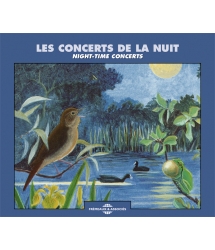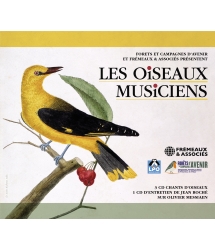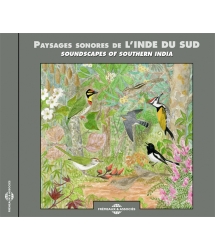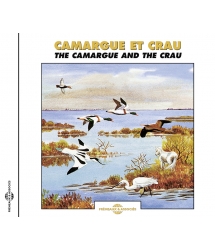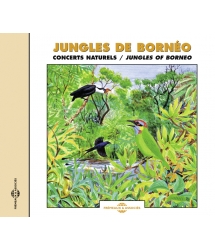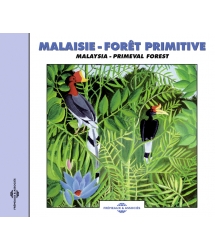- Our Catalog
- Philosophy
- Philosophers of the 20th century and today
- History of Philosophy (PUF)
- Counter-History and Brief Encyclopedia by Michel Onfray
- The philosophical work explained by Luc Ferry
- Ancient thought
- Thinkers of yesterday as seen by the philosophers of today
- Historical philosophical texts interpreted by great actors
- History
- Books (in French)
- Social science
- Historical words
- Audiobooks & Literature
- Our Catalog
- Jazz
- Blues
- Rock - Country - Cajun
- French song
- World music
- Africa
- France
- Québec / Canada
- Hawaï
- West Indies
- Caribbean
- Cuba & Afro-cubain
- Mexico
- South America
- Tango
- Brazil
- Tzigane / Gypsy
- Fado / Portugal
- Flamenco / Spain
- Yiddish / Israel
- China
- Tibet / Nepal
- Asia
- Indian Ocean / Madagascar
- Japan
- Indonesia
- Oceania
- India
- Bangladesh
- USSR / Communist songs
- World music / Miscellaneous
- Classical music
- Composers - Movie Soundtracks
- Sounds of nature
- Our Catalog
- Youth
- Philosophy
- News
- How to order ?
- Receive the catalog
- Manifesto
- Dictionnary











- Our Catalog
- Philosophy
- Philosophers of the 20th century and today
- History of Philosophy (PUF)
- Counter-History and Brief Encyclopedia by Michel Onfray
- The philosophical work explained by Luc Ferry
- Ancient thought
- Thinkers of yesterday as seen by the philosophers of today
- Historical philosophical texts interpreted by great actors
- History
- Books (in French)
- Social science
- Historical words
- Audiobooks & Literature
- Our Catalog
- Jazz
- Blues
- Rock - Country - Cajun
- French song
- World music
- Africa
- France
- Québec / Canada
- Hawaï
- West Indies
- Caribbean
- Cuba & Afro-cubain
- Mexico
- South America
- Tango
- Brazil
- Tzigane / Gypsy
- Fado / Portugal
- Flamenco / Spain
- Yiddish / Israel
- China
- Tibet / Nepal
- Asia
- Indian Ocean / Madagascar
- Japan
- Indonesia
- Oceania
- India
- Bangladesh
- USSR / Communist songs
- World music / Miscellaneous
- Classical music
- Composers - Movie Soundtracks
- Sounds of nature
- Our Catalog
- Youth
- Philosophy
- News
- How to order ?
- Receive the catalog
- Manifesto
- Dictionnary
Ref.: FA668
Label : Frémeaux & Associés
Total duration of the pack : 59 minutes
Nbre. CD : 1
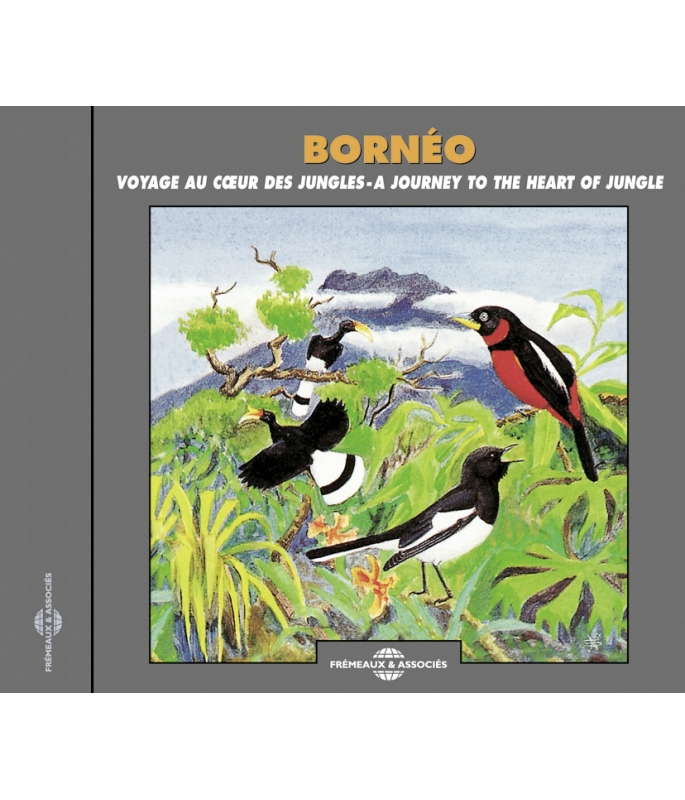
“This record offers you a chance to take a one hour journey through the stereophonic sounds of the various natural habitats to be found on the Island of Borneo. You may use it as a guide to the animal species, which the indications on the sleeve will enable you to identify, or simply enjoy the natural sounds.” Patrick Frémeaux
-
PisteTitleMain artistAutorDurationRegistered in
-
1Bornéo, une îleBorneo, an island00:12:171992
-
2Des rivières en guise de routesRives acting as road00:07:231992
-
3Découverte de la grande forêtDiscovering forest00:16:231992
-
4Dans les grottesIn the caves00:01:541992
-
5Au pied du mont KinabaluMount Kinabalu00:08:331992
-
6Orage et pluie en montagneStorm and rain00:07:351992
-
7Concert de batraciensFrog concert00:03:381992
-
8Un petit adieuA short farewell00:01:401992
Bornéo
Bornéo
Voyage au cœur des jungles
A journey to the heart of jungle
Voyage dans les “Paysages Sonores” de Bornéo
Le second grand massif forestier tropical de la planète est constitué par l’ensemble des forêts indo-malaises dont la disparition s’accentue dramatiquement aujourd’hui sous les pressions démographiques et économiques. Elles occupent l’archipel indo-malais de Sumatra à Bornéo jusqu’à la Papouasie Nouvelle-Guinée. Ce disque vous invite à un voyage sonore stéréophonique d’une heure dans différents milieux naturels de l’île de Bornéo. Il peut s’écouter aussi bien comme guide d’identification de quelques espèces animales à l’aide des indices apparaissant dans le corps des plages, ou comme ambiance d’agrément. Le disque comporte 8 plages dont chacune retrace l’ambiance d’un milieu naturel particulier. Au sein de chaque plage, des “sous-index” permettent le repérage précis des oiseaux et autres animaux dont on entend distinctement le chant ou les appels (attention toutefois, certains lecteurs de CD ne permettent pas la lecture de ces codes secondaires !). Jean-Pierre Picot a entièrement réalisé la partie sonore de ce CD : enregistrement en stéréophonie numérique sur magnétophone DAT, et mixages. Les textes de J.-P. Picot ont été adaptés et mis en page par Olivier Tostain autour des illustrations originales de Serge Nicolle.
Sommaire des plages :
1. Bornéo, une île
2. Des rivières en guise de routes
3. Découverte de la grande forêt
4. Dans les grottes
5. Au pied du Kinabalu, la montagne sacrée
6. Orage et pluie en montagne
7. Concert de batraciens
8. Un petit adieu
Plage n° 1 : Bornéo, une île.
Imaginez une île de près de 1,5 fois plus étendue que la France. Exactement située sous l’équateur, elle est couverte de montagnes élevées, de vastes marécages et – mais pour combien de temps encore ? – d’immenses étendues de forêt vierge. Il y fait toujours chaud et humide. Jusqu’au début des années 60, le centre de l’île était encore peuplé de ses habitants ancestraux, quelques dizaines de milliers de Dayacs, Punans et autres tribus jusqu’il y a peu coupeurs de têtes. Tous sont aujourd’hui condamnés à une disparition prochaine ou à une assimilation brutale dans le monde occidental qui s’empare de ces espaces naturels. Pour débuter ce voyage vers l’intérieur de Bornéo, nous prenons pied quelques instants en bord de mer sur un rivage de l’île. Nous sommes là dans le Parc Abdul Rahman au nord de Kota Kinabalu dans l’état du Sabah, la portion malaise de l’île de Bornéo.
1-2 (*) : Serpentaire de Kinbalu, Spilornis kinabaluensis. : Le long cri de l’aigle mangeur de serpents survolant la plage est notre première rencontre avec un oiseau de l’île. Puis s’organise un véritable concert.
1-3 : Chant d’oiseau.
1-4 : Merle et Drongos.
1-5 : Martin-pêcheur à collier blanc, Halcyon chloris.
1-6 : Drongo.
1-7 : Barbu bigarré, Megalaima rafflesii.
Plage n° 2 : Des rivières en guise de routes.
Les rivières restent le meilleur moyen pour s’aventurer dans l’intérieur des terres. Lentement la longue pirogue à moteur remonte le delta de l’immense fleuve Baram vers le Marudi. Des kilomètres de mangrove s’étendent à l’horizon : des palétuviers et des marécages de Palmiers nipa se succèdent pendant des heures. Après deux jours de navigation, nous atteignons le confluent de la petite rivière Mulu. L’évocation sonore de cette plage est un délicieux repos mérité au bord de l’eau et d’un village voisin.
2-1 : Bulbul à tête jaune, Pycnonotus zeylanicus. : Abondant dans la jungle, ce bulbul se retrouve dans les milieux secondaires, sur les lisières et le long des rivières. Son chant puissant, flutté et prolongé peut être comparé au rossignol ou aux merles européens. Il lui manque toutefois la variété des thèmes et les nuances en dynamique.
2-2 : Shama Merle, Copsychus saularis. : Le Shama Merle est le plus commun et sans doute l’un des plus sympathiques des oiseaux d’Asie. Omniprésent dans les espaces modifiés par l’homme, les jardins, et les bords de rivière, cet oiseau ressemble à une petite pie et on l’observe souvent perché en évidence. Son chant plein et varié est toujours en première place pour saluer la naissance du jour. Avec les passages suivants, cinq thèmes différents nous sont offerts ici.
2-3 : Barbu à joues bleues, Megalaima australis. : Commun sur Bornéo, ce barbu déborde des forêts primaires jusque dans les plantations et les zones urbanisées où l’on entend souvent ses appels interminables sur deux notes gutturales.
2-4 à 7 : Différents thèmes du Merle Shama, Copsychus saularis. : Son chant allie avec bonheur mélodie et puissance et intègre aussi quelques imitations.
2-8 : Calao rhinocéros, Buceros rhinoceros. : Cet oiseau impressionnant évolue en couples ou petites troupes dans la voûte de la forêt vierge alluviale. Son cri rauque émis en vol est très caractéristique des ambiances sonores de la forêt malaise, mais cette espèce symbolique tend aujourd’hui à disparaître devant la destruction organisée de son habitat.
2-9 : Shama malabar, Copsychus malabaricus. : Le passage en bord du fleuve se termine enfin sur un concert du Shama Merle. Le léger “hwe-it” audible à la fin est dû à une Timalie à couronne noire, Pellorneum capistratum.
Plage n° 3 : Découverte de la grande forêt.
La grande forêt tropicale couvrait originellement l’essentiel des zones de faible altitude en Asie du sud-est de son manteau de verdure exubérante. Se développant même sur les sols les plus pauvres, la forêt favorise le cycle des pluies, retient les eaux à travers l’abondance de la végétation et l’humus du sol, et prévient l’érosion par la densité du tissu racinaire. Véritable organisme vivant, la forêt entretient des relations complexes avec l’atmosphère et permet le développement de milliers d’espèces animales et végétales dont beaucoup sont utiles à l’homme. Cette plage vous invite en raccourci à une véritable ambiance de forêt équatoriale, débutant en fin de nuit, se poursuivant par le lever du soleil et les stridulations des premières cigales, et pour se résoudre enfin sur le coucher du soleil. A tout moment les cris et chants des habitants de la forêt sont essentiels pour les repérer dans l’épaisseur des feuillages qui les masquent à la vue.
3-2 : Mainate religieux (Gracula religiosa) et Gibbons à mains blanches (Hylobates). : Avec les mainates, les singes saluent les rayons du soleil par leurs hululements mélancoliques. Un effet de guide d’onde acoustique engendré par la différence de température sol/air du petit matin “transporte” ces cris à des kilomètres à la ronde. Ces deux espèces forment des symboles vivants de la forêt primaire non dégradée, car ils vivent en association étroite avec la variété des plantes et des arbres pour lesquels ils constituent d’importants disséminateurs de leurs semences. La disparition des plus grands arbres de la forêt avec l’exploitation effrénée des bois tropicaux les prive de leurs sources de nourriture ou de leurs gîtes de reproduction.
3-3 : La matinée est entamée. Les concerts des oiseaux se succèdent.
3-4 : Enfin le soir est de retour, souligné de nouveau par un concert de cigales démarré brusquement à 18 h précises. D’une taille impressionnante, ces insectes font un vacarme assourdissant avant de laisser la place aux sonorités plus calmes des criquets, grenouilles et autres petits animaux de la nuit.
Plage n° 4 : Dans les grottes.
Ce passage a été enregistré dans les grottes de Niah et Mulu, creusées depuis des millions d’années par les eaux d’infiltrations et reconnues comme les plus grandes du monde. Les salles immenses abritent toutes sortes d’animaux cavernicoles : serpents, araignées, scorpions et insectes spécialisés. Y vivent en outre des multitudes de chauves-souris ainsi que de petits martinets, les salanganes (improprement appelées “hirondelles”). Les chauves-souris habitent les grottes de Bornéo par millions d’individus. Tout comme les salanganes, elles demeurent pourtant étroitement liées au maintien de la forêt tropicale qui entoure ces sites de repos et de reproduction car elles y trouvent leur nourriture sous la forme des insectes du plancton aérien, lui-même tributaire de la végétation forestière pour son développement. Chauves-souris et salanganes se déplacent dans l’obscurité des cavernes par un système d’écholocation, donnant lieu à ces cris très aigus dont l’oreille humaine ne perçoit qu’une faible part (l’essentiel de leurs émissions sonores se situe dans la gamme des ultra-sons). Les voix d’hommes qui résonnent dans cette curieuse atmosphère rappellent que ceux-ci exploitent depuis fort longtemps deux richesses de ces grottes : le guano d’une part dont ils peuvent récolter jusqu’à plus d’une tonne par jour (accumulation des fientes de chauves-souris et de salanganes), et les fameux “nids d’hirondelles” d’autre part. Friandises très prisées de la cuisine chinoise où ils sont intégrés à des potages, les nids des salanganes sont presque exclusivement constitués de salive pure. Les minuscules coupes sont accrochées dans les fentes élevées de la voûte des plus grandes grottes, aussi les ramasseurs locaux ont-ils parfois construit des échafaudages de bambous pouvant atteindre 100 m de haut !
Plage n° 5 : Au pied du Mont Kinabalu.
Le Mont Kinabalu, “La Montagne Sacrée”, culmine à plus de 4100 mètres d’altitude. Il domine un Parc National remarquable par la diversité et le mélange des plantes qu’il abrite et protège. La fleur la plus grande du monde, la Rafflesia, cohabite avec plus de 1500 espèces d’orchidées et 26 formes de Rhododendrons, parmi tant d’autres.
5-1 : Pie de Malaisie, Dendrocitta occipitalis. : Espèce des forêts d’altitude, cette pie est pourtant rencontrée dans les vallées du parc. Elle préfèrera les formations secondaires bordant les rizières que la forêt primaire sur les pentes des sommets. Sa longue queue alliée à sa voix riche en sifflements flûtés en font un oiseau inoubliable que son comportement effacé rend toutefois peu visible.
5-2 : Garrulaxe gris et brun, Garrulax palliatus. : Puis prend place le concert étrange d’un groupe de garrulaxes. S’accélérant brutalement, il en devient presque insupportable. Parfois, cet oiseau émet aussi des cris rappelant des miaulements de chat en colère.
5-3 : Garrulaxe noir, Garrulax lugubris. : Cette espèce réside à des altitudes moyennes et est facilement reconnaissable à son appel que l’on peut entendre soit comme “queer-queer-hoop”, soit encore comme “hoop-hoop-hoop” (tel qu’il est présenté à l’index 5).
5-4 : Long sifflet d’oiseau sur le sentier menant au sommet du Mont Kinabalu.
5-5 : Garrulaxe noir, Garru-lax lugubris. : De nouveau, une petite troupe entonne son refrain.
5-6 : Barbu à nuque dorée, Megalaima pulcherrina. : Constituée de 3 syllabes bien distinctes, l’oiseau répète inlassablement sa strophe du matin au soir, le bec étant tenu fermé. Cette plage prend fin sur un fond d’insectes. Le “took-took-troo” du Barbu à nuque dorée est accompagné des sonorités très relaxantes de cigales et de sauterelles.
Les insectes du Kinabalu :
Les Cigales vibrent, les mâles produisant des sons à l’aide de deux membranes plissées appelées timbales, une force alternant entre l’attraction et le relâchement des muscles. Quant à elles, les Sauterelles frottent leurs ailes supérieures l’une contre l’autre, agissant ainsi comme un peigne que l’on actionnerait sur le rebord d’une boîte faisant caisse de résonnance. De ce fait, le son produit est beaucoup plus puissant que celui du criquet. Le Criquet gratte. Le mâle chante en produisant un mouvement de va-et-vient de ses cuisses ornementées contre le rebord de ses ailes. La face interne de ses pattes porte une succession de petites dents chitineuses faisant office de peigne. Enfin, les Grillons font vibrer leur élytres à un rythme de 4 200 fois par seconde. La stridulation résultante atteint une fréquence 4 fois supérieure aux aigus les plus fins que peut distinguer l’oreille humaine !
Plage n° 6 : Orage et pluie en montagne.
L’eau coule, goutte, dégouline. La pluie fait partie intégrante du paysage et des atmosphères de la forêt tropicale. L’eau des pluies et la forêt toute entière sont étroitement liées, l’occurrence de l’une entretenant le développement de l’autre, et inversement. Régulateur des flux gazeux, la forêt agit aussi comme une éponge vis-à-vis des précipitations. Capable d’absorber d’énormes orages, la forêt libèrera ensuite progressivement ses réserves aquifères à travers son réseau de torrents et rivières tout en provoquant de nouvelles pluies par condensation locale de sa propre transpiration.
6-2 : L’orage arrive, et les oiseaux de la plage précédente s’énervent. Imperturbables, les insectes continuent leur cacophonie.
6-3 : L’orage éclate soudain. Orage typique de l’ambiance des montagnes qui nous entourent, résonnant et violent. Les oiseaux se sont tus et l’eau tombe avec force. Elle martèle le sol, dissout, érode les secteurs exposés. Les feuillages alourdis de tant d’eau peuvent entraîner au sol les plus grands arbres, les racines ne les retenant plus dans un sol détrempé. Les grondements de l’orage se font plus pressants, et la foudre s’abat à proximité. La pluie redouble d’intensité, mais finit enfin par s’arrêter, presque aussi soudainement qu’elle était arrivée (l’orage dura en réalité plus de 2 heures). Le concert des batraciens prend place.
Plage n° 7 : Concert de batraciens.
L’orage et la pluie laissent place au grand concert du soir : rainettes, crapauds et insectes prennent part à la grande fête sonore sans cesse renouvelée.
Plage n° 8 : Un petit adieu.
La paix est revenue sur la montagne.
8-1 : En signe d’adieu, une petite fauvette nous ravi de ses strophes aigues. La Couturière des montagnes (Orthotomus cucullatus) se faufile dans les broussailles sur les pentes du Kinabalu.
8-2 : Minivet mandarin, Pericrocotus solaris.
Jean-Pierre PICOT
P 1992 PITHYS – 2008 FRÉMEAUX & ASSOCIÉS
© 2008 GROUPE FRÉMEAUX COLOMBINI SAS
Liste alphabétique des espèces présentées dans ce disque / Alphabetic list of the species presented on the CD
Oiseaux / Birds
Barbu à joues bleues / Little (blue fared) barbet / Megalaima australis
Barbu à nuque dorée / Golden naped barbet / Magalaima pulcherrina
Barbu bigarré / Red crowned barbet / Megalaima rafflesii
Bulbul à tête jaune / Straw headed bulbul / Pycnonotus zeylanicus
Calao rhinocéros / Rhinoceros hornbill / Buceros rhinoceros
Couturière des montagnes / Mountain tailorbird / Orthotomus cucullatus
Garrulaxe gris et brun / Grey and brown laughing trush / Garrulax palliatus
Garrulaxe noir / Black laughing thrush / Garrulax lugubris
Martin-pêcheur à collier blanc / White collared kingfisher / Halcyon chloris
Mainate religieux / Hill myna / Gracula religiosa
Minivet mandarin / Mountain minivet / Pericrocotus solaris
Pie de Malaisie / Malaysian treepie / Dendrocitta occipitalis
Shama malabar / White rumped shama / Copsychus malabaricus
Shama Merle / Magpie robin / Copsychus saularis
Timalie à couronne noire / Black capped babbler / Pellorneum capistratum
Serpentaire de Kinabalu / Mountain serpent eagle / Spilornis kinabaluensis
Mammifères / Mammals
Gibbon à mains blanches / White handed gibbon / Hylobates
english notes
A journey through the “Sound Landscapes” of Borneo
The Indo-Malaysian forests represent the second largest area of tropical forest on Earth. They cover the Indo-Malaysian archipelago from Sumatra to Borneo, extending as far as Papua New Guinea. The speed at which the forest is disappearing has increased dramatically due to demographic and economic pressure. This record offers you a chance to take a one hour journey through the stereophonic sounds of the various natural habitats to be found on the Island of Borneo. You may use it as a guide to the animal species, which the indications on the sleeve will enable you to identify, or simply enjoy the natural sounds. There are 8 tracks on the record, each of which conjures up a particular natural environment. Within each track, “sub-indices” facilitate accurate identification of birds and other animals whose song or cries are clearly audible (NB: some CD players do not display the secondary codes). Jean-Pierre Picot was exclusively responsible for sound production on this CD: digital stereo recording in August 1991 using a SONY DAT® recorder and SONY® microphones and tapes, mixing and mastering using a SONY® digital system. Finally the product was duplicated on SONY® material in the DADC works in Austria. The texts by Jean-Pierre Picot were adapted and set by Olivier Tostain with original illustrations by Serge Nicolle.
Track summary:
1. Borneo, an island
2. Rivers acting as roads
3. Discovering the great forest
4. In the caves
5. At the foot of Kinabalu, the sacred mountain
6. Storm and rain in the mountains
7. Frog concert
8. A short farewell
Track n° 1 : Borneo, an island.
Imagine an island roughly one and a half times the size of France. It is situated right on the Equator and is covered by high mountains, huge swamps and – for how much longer? – enormous expanses of virgin forest. The weather is always hot and humid. Until the beginning of the sixties the centre of the island was still occupied by its original inhabitants; several tens of thousands of Dayacs, Punans and other tribes of head-hunters. Today they are all destined to disappear or be sucked into the westerntype civilisation which is destroying their natural environment. As we start our journey into the heart of Borneo we shall pause for a moment on the island’s seashore, in Abdul Rahman Park to the north of Kota Kinabalu, in Sabah state, which is the Malay part of Borneo.
1-2 (*) : Mountain Serpent eagle, Spilornis kinabaluensis. : The long cry of this snake-eating eagle as it flies over the beach constitutes our first meeting with the bird population of the island. Then a concert of song starts.
1-3 : Bird song.
1-4 : Blackbirds and Drongos.
1-5 : White collared kingfisher.
1-6 : Drongo.
1-7 : Red crowned barbet, Megalaima rafflesii.
Track n° 2: Rivers acting as roads.
River transport is the best way of adventuring inland. The motor-driven pirogue moves slowly up the delta of the immense Maraudi river. Mile after mile of mangrove swamp and Nipa palms, stretching as far as the eye can see. After two day’s navigation we reach the junction with a small river, the Mulu. This track evokes a much-deserved rest close to the water and a nearby village.
2-1: Straw headed bulbul, Pycnonotus zeylanicus. : This Bulbul, which is abundant in the jungle, may be found in secondary habitats, at the edge of the forest and along the riverbanks. Its powerful song, fluted and drawn out, is comparable to that of the nightingale or European blackbirds. However they lack the latter’s variety and dynamic subtlety.
2-2: Magpie robin, Copsychus saularis. : The Shama blackbird is one of the commonest and certainly one of the most likeable birds in Asia. It abounds in areas where man has left his mark, in gardens and along river banks. It resembles a little magpie and is often to seen perched in a commanding position. Its full-throated and varied song is always clearly audible in the dawn chorus. In the following extracts, five different themes can be heard.
2-3: Little blue fared barbet, Megalaima australis. : Common on Borneo, this Barbet has spread from the primeval forests into the plantations and built-up areas, where its interminable guttural, two-note cry may be heard.
2-4 to 7: Different themes from the Magpie robin, Copsychus saularis. : Its song, which is a fine combination of melody and strength, also includes a number of imitations.
2-8: Rhinoceros hornbill, Buceros rhinoceros. (Opposite) : This impressive bird lives in couples or small groups high up in the virgin forest of the alluvial plains. Its raucous cry, made as it flies, is very characteristic of the sound of the Malay forest. This symbolic species is slowly disappearing as its natural habitat is destroyed.
2-9: White rumped Shama, Copsychus malabaricus. : Our stay on the river bank ends with a concert from the Shama blackbird. The faint “hwe-it” which may be heard at the end comes from a Black capped babbler, Pellorneum capistratum.
Track n° 3: Discovering the great forest.
Tropical forest originally covered almost all low-lying areas in south-east Asia with its cloak of exuberant greenery. It developed even on the poorest soils encouraging the rain cycle; abundant vegetation and soil humus retained the water and the massive network of roots helped to prevent soil erosion. Comparable to a living organism, the forest maintains complex relationships with the atmosphere making it possible for thousands of animal and plant species to develop, many of which are of use to man. This track offers you a chance to appreciate the atmosphere of the tropical forest, in a truncated form. The recording starts at the end of the night, continues with the sunrise and the sounds of the first cicadas, to finish at sunset. At all times the cries and songs represent the only way of identifying the inhabitants of the forest amidst the dense foliage.
3-2: Hill myna (Gracula religiosa) and White handed Gibbons (Hylobates). : In the company of the Hill mynas, the monkeys greet the first rays of the suns with their melancholic hooting. An acoustic effect, caused by the difference in temperature between the air and the soil in the early morning, “carries” the cries for miles around. These two species are living symbols of the undisturbed primeval forest; their lives are closely linked to the variety of plants and trees, as they contribute to disseminating their seeds. The disappearance of the largest forest trees, due to haphazard exploitation of tropical timber resources, deprives them of a valuable source of food and a shelter for reproduction.
3-3: Mid-morning punctuated by successive concerts of bird song.
3-4 : Dusk approaches, marked by another concert of cicadas, which starts punctually at 6 pm. These insects, which grow to an impressive size, produce a deafening row before giving way to the more peaceful sounds of crickets, frogs and other small, nocturnal animals.
Track n° 4: In the caves.
This section was recorded in the Niah and Mulu caves, which were hollowed out over millions of years by water infiltration. They are generally considered to be the largest in the world. The immense chambers shelter all sorts of cave-dwelling animals: snakes, spiders, scorpions and specialist insects. In addition there are hosts of little bats and little swifts, salanganes* (incorrectly referred to as “swallows”). There are millions of bats in the Borneo caves. As is the case with the salanganes*, their survival depends on the tropical forest which surrounds the caves where they rest and reproduce. It is here that they find nourishment in the form of aerial plankton insects, whose development is in turn is dependent on the forest vegetation. The bats and salanganes* move through the darkness of the caves thanks to an echo-location system which relies on high-pitched cries, only partly audible to the human ear (the major part of their output is ultra-sonic). The human voices resounding in this strange atmosphere are a reminder that man has long used two by-products of the caves: guano, over a ton of which can be harvested each day (an accumulation of bat and salangane* droppings), and the celebrated “bird’s nests”. The latter are highly rated by the Chinese, who use them in soups; the nests are almost completely built of saliva. The tiny cup-like structures cling to cracks high up in the vaults of these huge caves and the local nest-collectors have had to build bamboo scaffolding up to a hundred metres high!
Track n° 5: At the foot of Mount Kinabalu.
The summit of Mount Kinabalu, “The Sacred Mountain”, is at 4,100 metres above sea level. It dominates a National Park which is remarkable for the diversity and mixture of plants to which it is home. The largest plant in the world, Rafflesia, grows alongside over 1,500 species of orchid and 26 types of Rhododendron, to mention but a few.
5-1: Malaysian treepie, Dendrocitta occipitalis. : This magpie belongs to a species found in high altitude forests, but it is also found in the valleys of the Park. It prefers secondary formations bordering the paddy fields to the primeval forests on the slopes of the summits. With its long tail and its rich voice – producing a flute-like whistling sound – this is an unforgettable bird, often difficult to spot on account of its discreet behaviour.
5-2: Grey and brown laughing thrush, Garrulax palliatus. : A strange concert, from a group of laughing thrushs, starts. Accelerating suddenly it grows to an almost unbearable crescendo. Sometimes this bird gives a cry which is reminiscent of an angry cat.
5-3: Black laughing thrush, Garrulax lugubris. : This species lives at medium altitudes and is easily recognisable by its cry resembling a “hoop-hoop-hoop” (as shown in index 5).
5-4: Long whistle by a bird on the path to the summit of Mount Kinabalu.
5-5: Black laughing thrush, Garrulax lugubris. : Once again a small group sings the refrain.
5-6: Golden naped barbet, Megalaima pulcherrina. : Its song comprises three, clearly distinguishable syllables, which it repeats tirelessly from morning to night, keeping its beak tightly shut. This track ends with a background of insect noises. The “took-took-troo” of the Golden naped barbet is accompanied by the relaxing measures of cicadas and grasshoppers.
The insects of Kinabalu:
The Cicadas vibrate. The males produce sounds using two folded membranes called timpani and a force which alternated between muscular attraction and relaxation. As for the Grasshoppers they rub their upper wings together, in the same way as a comb may be drawn along the edge of a resonator. This explains why the resulting sound is so much more powerful than the one produced by a cricket. The Locust grates. The male sings by moving its thighs back and forth against the edge of its wings. The inside of its legs are studded with little chitinous teeth which form a sort of comb. To conclude, Crickets vibrate their wing-sheaths at a speed of 4,200 strokes per second. The resulting sound reaches frequencies four times higher than the highest sounds heard by a human ear!
Track n° 6: Storm and rain in the mountains.
Pouring rain, dripping and trickling. Rain is an integral part of the landscape and atmosphere of the tropical forest. Rainwater and the entire forest are intimately related, the occurrences of one maintaining the development of the other and vice-versa. The forest regulates the flow of gases and acts as a sponge for the downpour. It is capable of absorbing enormous storms, gradually releasing its groundwater reserves via a network of torrents and rivers and provoking further rainfall thanks to local condensation of its own “perspiration”.
6-2: Onset of the storm upsetting the birds in the preceding track. Imperturbable, the insects continue their din.
6-3: The storm breaks suddenly; typical of the mountain ambience which surrounds us, it is loud and violent. The birds have fallen silent and the rain falls heavily, hammering on the ground, dissolving, eroding exposed parts. Foliage, weighted down by so much water, may pull down even the largest trees as the roots lose their grip on the sodden earth. The grumbling of the storm comes closer and lightning strikes close at hand. The rain doubles in intensity, then stops at last, almost as suddenly as it started (the storm actually lasts over 2 hours). This is followed by a frog concert.
Track n° 7: Frog concert.
The storm gives way to the evening’s concert: tree-frogs, toads and insects join in one great festival of sound, which is constantly renewed.
Track n° 8: A short farewell.
Peace has returned to the mountain. As a farewell gesture, a little fauvette treats us to a few lines of high-pitched song: Mountain tailobird (Orthotomus cucullatus) scuttles through the undergrowth on the slopes of Mount Kinabalu.
8-2: Mountain minivet, Pericrocotus solaris.
Jean-Pierre PICOT
P 1992 PITHYS – 2008 FRÉMEAUX & ASSOCIÉS
© 2008 GROUPE FRÉMEAUX COLOMBINI SAS
CD Bornéo - Voyage au cœur des jungles - A journey to the heart of jungle © Frémeaux & Associés / Droits audio : Frémeaux & Associés - La Librairie Sonore (Producteur initial : Sittelle, Pithys, Collection Allain Bougrain Dubourg ou Ceba) / Ecouter les chants d'oiseaux sur CD : Sons et ambiances naturelles des écosystèmes - Stéreo and digital recording of the natural landscape sound. Natural sound sceneries of écosystems, Voices of the Wild Life. Les droits de cet enregistrement sont protégés par la loi. Pour toute exploitation d’illustration sonore sur CD, DVD, CD-Rom, Télévision, Cinéma, Sites internet, scénographies (théâtre, musées…), l’autorisation et un devis gratuit peuvent être obtenus auprès de Frémeaux & Associés – fax : +33 (0)1 43.65.24.22 info@fremeaux.com
